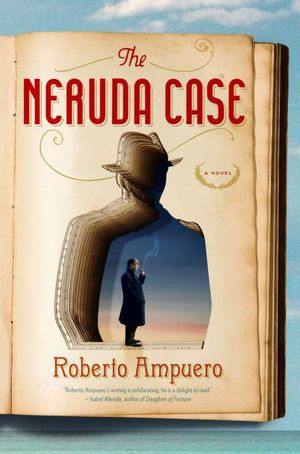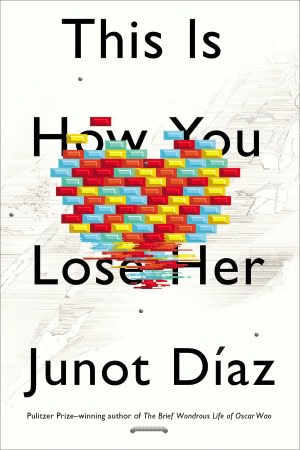The Best Story I Read in a Lit Mag This Week: “Mort Naturelle” by Ricardo Nuila
For most of us, our bodies can be mysteries, but in Ricardo Nuila’s story “Mort Naturelle,” we find them painfully explained. Here’s what happens to a spleen when a parachute doesn’t deploy; here’s how a jaw disappears when it’s been blasted with birdshot; here’s the sinewy tendons from a neck wedged in a closed elevator, a stray head rolling around on the tile floor; here’s the pus that oozes like a tear from a septic wound.
On my first read through, I wrote in the margins of Ninth Letter: “This story makes me uncomfortable.” Because it does—it’s a series of three vignettes told by an omniscient first-person narrator, each detailing a different “case,” combinations of freak accidents, small miracles, and strange coincidences. There’s a pair of skydivers, an attempted suicide and his lover, a young intern and the traumatized maintenance worker trapped in an elevator.
Each section focuses on the body, its awesome feats and obvious (yet often ignored) vulnerabilities. Much of the information about these characters, we come to understand, has been pulled from the patients’ charts. The language Nuila uses is clinical and dense, words recognizable but not entirely understood. Still, we don’t need a dictionary because when we read a sentence like, “Oribtal architecture obliterated by underlying abscess,” we know: things are not going great. And I don’t know about you, dear reader, but when I start hearing about porcelain gall bladders and severed spines and “bowel spillage [hidden] in the peritoneal folds like glass in carpet,” I begin to feel my own body, the way tendons move when I stretch a limb, the tension tangled up in my shoulders after a day at work, the absolute frailty of my joints and bones and eyes and all of the pieces of me that I need to keep on existing. Nuila does a lovely job of making me uneasy using these details, and it was this discomfort, in part, that initially kept me reading.
Of course, if this were just a story about bodies (and all the bad things that can happen to them), it would be no more than a patient’s chart or a gory horror movie, where words and images are used to either convey practical information or give us a kind of cheap, grossed-out thrill. But the hardly-present, first-person narrator transforms the story. We get nearly all the way through the first vignette before we hear mention of an “I,” and even then, the narrator doesn’t often refer to himself, preferring instead to stick to information about the patients and their histories. But despite the narrator’s limited presence, we know that he’s haunted by the human connection he can see and feel at the periphery of each case. He draws our attention to these details, telling us that the woman who survives the skydiving accident writes a thank-you note, which a nurse includes in the dead skydiver’s chart. He lets us know that a gospel hymn soothes the woman trapped in the elevator, even though its lyrics are in a language she doesn’t understand. He calls our attention to the shotgun shell from the gun of the near-suicide, which isn’t buckshot, ammunition that would’ve killed him for certain, but birdshot instead.
The narrator shows us the coincidences, the mistakes, the almost-insignificant shifts that decide the course of a life. He highlights these moments, lets us know that Jim the skydiver should’ve been at his dad’s farm that day instead, lets us know that the ENT specialist working on the shotgun victim knew that she wasn’t qualified to perform the operation on his face.
Some of these things the narrator can’t know—not from the chart or through hearsay. He can’t know the thoughts of the spectators on the ground watching as the skydivers’ parachutes didn’t deploy, and he can’t know about how a chaplain pulled a blank piece of paper from a printer before placing it in the attempted suicide’s chart. The narrator is either fabricating, or he’s done extensive research, or he’s simply capable of knowing what the rest of us can’t.
Regardless, his access to this privileged information still isn’t enough to let him see inside the minds’ of the dead and dying, to figure out what they were thinking and what drove them to do what they did. “What did he believe?” the narrator asks of the near-suicide, and Nuila reveals that the narrator’s medical insight and understanding can’t—or won’t—show him what it is that makes one stranger sacrifice his life for another or what calms a traumatized body if it isn’t chemicals in that person’s bloodstream.
The narrator goes on to ask of the patient comforted by gospel music: “What I need to know is, Is it the harmony or the words?” There’s desperation in the question, which is especially poignant coming from a voice that is capable of also being so sterile and devoted to the concrete. Here, we can see the narrator struggle with one of the many contradictions of being human—we feel like such unique, individual creatures, yet we live in very generic, patterned, and predictable bodies. What’s moving about the story is that, by the end, both the narrator and we need to know: how are we so specific, so capable of kindness and gratitude, when what kills us is so general and easily understood?
So you should check this out—Nuila’s use of an omniscient first-person narrator is doing some great things and my thoughts kept returning to it after my first read. You can find “Mort Naturelle” in the Fall/Winter 2012-13 issue of Ninth Letter. (And maybe if you’re lucky you already managed to snag a copy at AWP.)
“The Best Story I Read in a Lit Mag This Week” is a new series focused on—you guessed it—great pieces of fiction in recent issues of literary journals. Have a journal you think I should check out? Tell me about it in the comments or shoot me an email at lymreese at gmail dot com.


